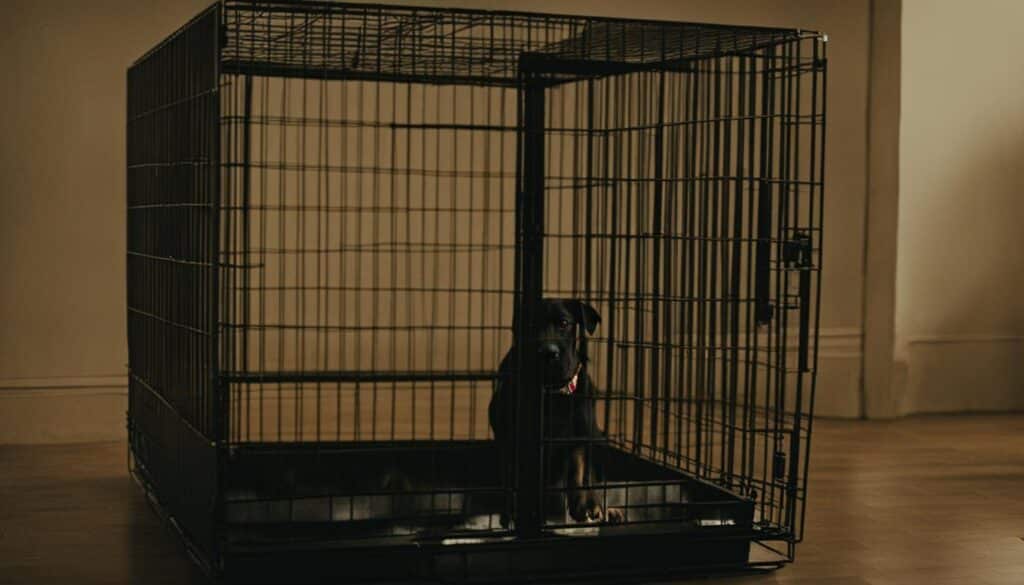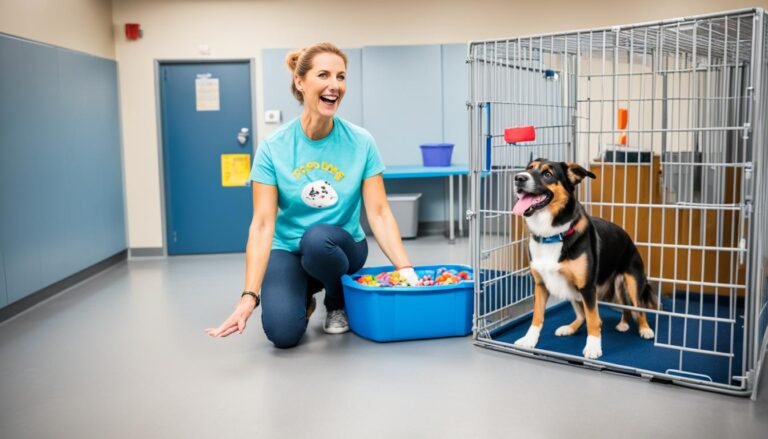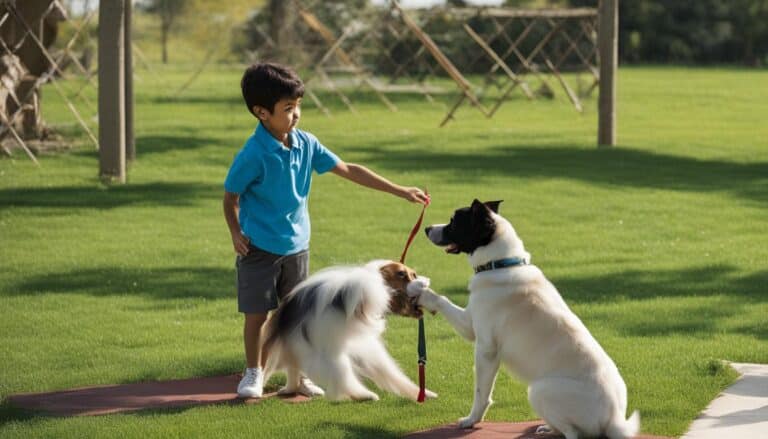Is Crate Training a Dog Cruel?
There is an ongoing debate about whether crate training is cruel or beneficial for dogs. Some argue that crating deprives dogs of their basic needs and limits their interaction with the environment, while others emphasize the advantages of crate training for both dogs and owners.
Before we delve into the pros and cons of crate training, let’s first understand what it entails. Crate training involves using a crate or kennel as a safe and secure space for your dog. It serves as a den-like environment where they can rest, sleep, and feel protected.
Advocates of crate training highlight several benefits. First, it can aid in housebreaking, as dogs naturally avoid soiling their sleeping area. This can shorten the time it takes to housetrain a puppy. Additionally, crate training can prevent destructive behavior by keeping dogs away from potential hazards, such as electrical cords or toxic substances.
Crate training can also provide a sense of security for dogs, particularly when they are tired, ill, or stressed. It can be their refuge, allowing them to retreat and relax. Furthermore, crates can facilitate training exercises and strengthen the bond between you and your furry friend.
However, critics of crate training express concerns about its impact on dogs’ well-being. They argue that prolonged confinement and isolation can lead to behavior problems and affect their physical and psychological health. These critics believe that dogs are social animals who require companionship, exercise, and the freedom to behave naturally.
Ultimately, the decision to crate train your dog should consider their individual needs, personality, and your own preferences. It’s important to ensure that crate training is implemented responsibly, providing ample exercise, socialization, and mental stimulation. Remember, every dog is unique, and what works for one may not work for another.
In the next sections, we will explore in detail the benefits of crate training, controversies surrounding this practice, alternatives to crate training, and important considerations to keep in mind.
The Benefits of Crate Training
Crate training is a highly effective dog training method that offers numerous benefits for both puppies and adult dogs. When done correctly, crate training can provide a safe and comfortable environment for your dog while aiding in their development and behavior.
1. Helps with Housebreaking
One of the key advantages of crate training is its ability to expedite the housebreaking process for puppies. By confining them to a crate, you can teach them bladder and bowel control, minimizing accidents in the house. The crate acts as a den, promoting natural instincts for dogs to keep their living area clean.
2. Prevents Destructive Behavior
Crate training serves as a useful tool in preventing destructive behavior. When left unsupervised, dogs may chew on furniture, shoes, or other household items. A crate provides a safe space where your dog can be confined and prevented from engaging in destructive chewing or ingesting dangerous objects, such as electric cords or toxic substances.
3. Creates a Secure Retreat
For dogs, having a secure and cozy retreat is essential for their mental well-being. A crate can serve as a den-like environment where your dog can feel safe, particularly when they are tired, not feeling well, or experiencing anxiety or stress. It gives them a designated space that they can retreat to and offers a sense of security.
4. Facilitates Training and Bonding
Crate training can be an effective aid in training your dog. When used as part of a comprehensive training program, it can help establish boundaries and reinforce positive behaviors. Additionally, spending time with your dog during crate training sessions can strengthen the bond between you and your furry friend as you work together toward shared goals.
5. Convenient for Transportation and Travel
Crate training enables easier transportation and travel with your dog. Whether you’re going on a road trip or taking your dog to the vet, having a crate-trained dog can make these experiences less stressful. Dogs who are accustomed to crates are generally more comfortable during car rides and adapt better to new environments.
It is important to note that crate training should be implemented responsibly and should never be used as a substitute for proper exercise, attention, and stimulation. Additionally, each dog is unique, so it’s crucial to consider their individual needs, temperament, and preferences when deciding if crate training is the right choice for them.
Controversies Surrounding Crate Training
Despite the benefits of crate training, there are controversies surrounding this practice. Some argue that crating deprives dogs of their basic needs, such as freedom of movement, interaction with the environment, and the ability to behave naturally. They believe that dogs are highly social pack animals who require companionship, praise, and exercise.
Opponents of crate training claim that the prolonged confinement and isolation associated with crating can lead to behavior problems and affect the physical and psychological well-being of the dogs. They believe that dogs should have the opportunity to roam freely and feel a part of the family.
On the other hand, proponents of crate training highlight that when introduced properly, this method can be beneficial. They stress the importance of gentle leadership and positive conditioning when introducing crate training to dogs. They believe that a crate can provide a safe and comfortable space, similar to a den, where dogs can feel secure and relax.
It is essential to be aware of these controversies and consider the specific needs and temperament of your dog before deciding to crate train. Every dog is unique, and what works for one may not work for another. It is crucial to evaluate the pros and cons of crate training and make an informed decision that aligns with your values and the well-being of your furry friend.

Alternatives to Crate Training
If you are not comfortable with crate training or if it doesn’t suit your dog’s needs, there are alternative options to consider. Instead of confining your dog to a crate, you can provide a larger, more comfortable area for them. This can be achieved by setting up a designated confinement area that allows for freedom of movement while still ensuring their safety. Make sure to provide all the necessary resources such as food, water, toys, and bedding in this area to create a comfortable environment for your dog.
Another alternative to crate training is utilizing pet services or arranging for a reliable person to take your dog out for a midday walk if you cannot be home during the day. This way, your dog can still stretch their legs and relieve themselves outside without having to be confined in a crate.
If you have a secure yard, consider installing a doggie door to allow your dog to go in and out as they please. This gives them the freedom to roam outside and use the bathroom when needed. Another option is paper training, where you designate a specific area in your home where your dog can relieve themselves on training pads or newspapers.
Providing your dog with an animal companion can also be an effective alternative to crate training. Having a playmate can help alleviate boredom and prevent neurotic behavior caused by being alone. Make sure to introduce any new pets properly and ensure that they get along well.
Lastly, if your dog experiences separation anxiety, crate training may not be the best solution. Instead, you can address separation anxiety through behavior modification techniques and gradual desensitization. Seek guidance from a professional dog trainer or behaviorist who can help you develop a personalized training plan for your dog’s specific needs.

There are various alternatives to crate training that can be considered based on your dog’s individual needs and preferences. It’s important to explore these alternatives and choose the method that best suits your dog’s well-being and your own comfort level. Remember, every dog is different, and what works for one may not work for another.
Personal Considerations and Conclusion
When deciding whether to crate train your dog, it’s important to consider a variety of factors that are unique to your furry friend. Assess your dog’s individual needs, temperament, and preferences before making a decision. While crate training can offer benefits, it’s crucial to implement it responsibly and provide other forms of exercise, companionship, and stimulation to ensure your dog’s overall well-being.
While crate training may be effective for some dogs, it’s worth exploring other dog training methods and alternatives if crate training does not align with your values or your dog’s specific needs. Every dog is unique, and what works for one may not work for another. It’s essential to find the training approach that is both effective and comfortable for you and your canine companion.
Remember, the controversy surrounding crate training stems from concerns about depriving dogs of their basic needs and natural behavior. By considering alternative options and implementing effective training methods, you can create a positive and enriching environment for your dog. Prioritize their well-being and tailor your approach to suit their individual needs, and you’ll be well on your way to fostering a loving and well-trained companion.






